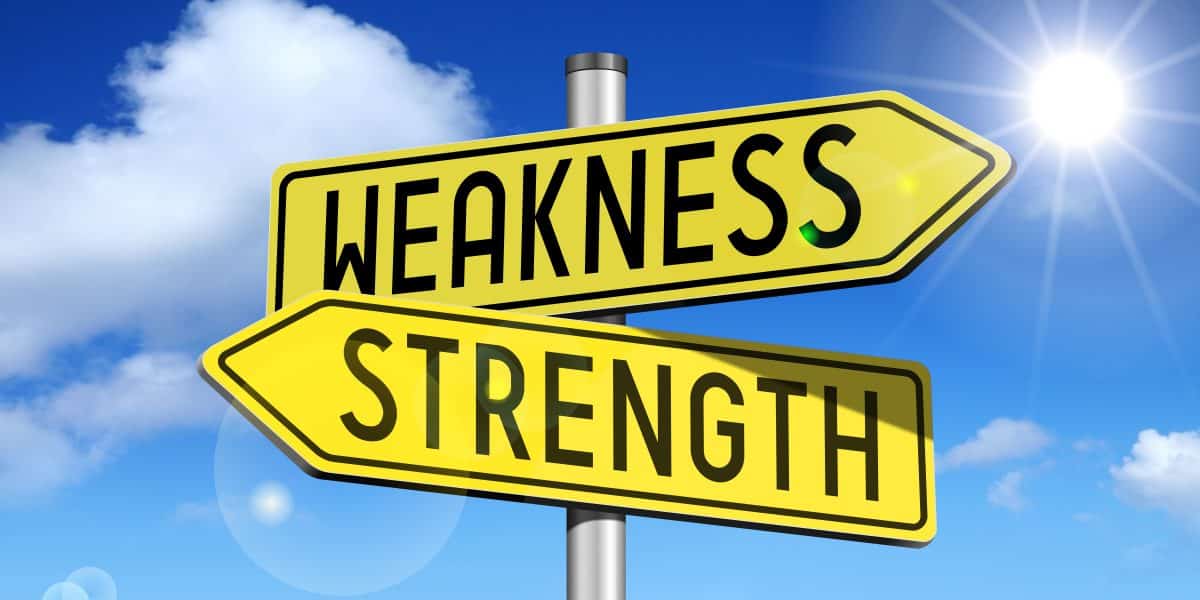Identifying Employee Strengths and Weaknesses
Understanding employee strengths and weaknesses is crucial. It’s a key factor in boosting productivity and morale. But how do you identify these strengths and weaknesses? How do you use this knowledge to enhance performance reviews and personal development plans?
These are questions that managers, HR professionals, and employees often grapple with. In this comprehensive guide, we aim to provide answers. We’ll delve into techniques for identifying strengths and weaknesses, and offer actionable insights. And in a very practical way, we’ll provide examples that can be used in real-world scenarios.
Whether you’re a manager seeking to improve team dynamics, an HR professional conducting performance reviews, or an employee looking to self-assess, this guide is for you. Join us as we explore the importance of identifying employee strengths and weaknesses, and how to leverage this knowledge for improved work performance.
The Importance of Recognizing Employee Strengths and Weaknesses
Recognizing employee strengths and weaknesses is a vital part of business management. It’s not just about performance reviews or personal development plans. It’s about fostering a culture of growth and improvement.
When managers understand their team members’ strengths, they can assign tasks more effectively. This leads to increased productivity and job satisfaction. It also boosts morale, as employees feel valued for their unique contributions.
On the other hand, recognizing weaknesses is equally important. It allows for targeted development and improvement. It also helps in setting realistic expectations and goals.
Why Focus on Strengths?
Focusing on strengths has several benefits. It allows employees to do what they do best, leading to higher job satisfaction and productivity. It also fosters a positive work environment, boosting morale and engagement.
Moreover, aligning strengths with organizational goals can drive business growth. It ensures that the right people are in the right roles, maximizing their potential. It also helps in retaining top talent, as employees feel recognized and valued.
The Role of Weaknesses in Development
While focusing on strengths is important, ignoring weaknesses can be detrimental. Weaknesses, if left unaddressed, can hinder performance and productivity.
However, weaknesses should not be viewed negatively. Instead, they should be seen as opportunities for growth and development. By identifying and understanding weaknesses, employees can work on improving these areas.
Moreover, addressing weaknesses can lead to increased resilience and adaptability. It can also foster a growth mindset, where challenges are viewed as opportunities to learn and improve. In this way, weaknesses can be turned into strengths, contributing to personal and professional development.
How to Identify Employee Strengths
Identifying employee strengths is not always straightforward. It requires a keen understanding of each individual’s capabilities and potential. It also involves observing their performance and behavior over time.
One effective way to identify strengths is through regular performance reviews. These provide an opportunity to assess an employee’s skills, knowledge, and abilities. They also allow for a discussion about the employee’s interests and career goals.
Another method is through peer feedback. Colleagues often have a unique perspective on an individual’s strengths, as they work closely together on a daily basis. This can provide valuable insights that may not be apparent to managers. G360 Surveys can help you with that!
Techniques for Managers
For managers, identifying employee strengths can be achieved through several techniques. One is through direct observation of an employee’s work. This allows managers to see firsthand the skills and abilities an employee brings to their role.
Another technique is through one-on-one discussions. These provide an opportunity for managers to ask employees about their perceived strengths. It also allows for a deeper understanding of the employee’s interests and career aspirations.
Finally, managers can use personality tests or assessments. These can uncover hidden strengths and provide a more comprehensive view of an employee’s capabilities.
Self-Identification Strategies for Employees
For employees, self-identification of strengths can be a powerful tool for personal and professional development. One strategy is through self-reflection. This involves thinking about past successes and what skills or abilities contributed to those achievements.
Another strategy is seeking feedback from colleagues and managers. This can provide a different perspective and highlight strengths that may not be apparent to the individual.
Lastly, employees can use online resources or assessments. These can help identify strengths and provide suggestions for how to leverage them in the workplace.
How to Recognize Employee Weaknesses
Recognizing employee weaknesses is equally important as identifying strengths. It’s a crucial part of personal and professional development. However, it’s a sensitive task that requires tact and understanding.
Weaknesses are not necessarily negative. They can be areas of improvement or opportunities for growth. It’s important to approach them from a constructive perspective.
There are several ways to recognize employee weaknesses:
- Regular performance reviews
- Direct observation
- Feedback from colleagues
- Self-assessment
Constructive Feedback and Examples
Providing constructive feedback is a key part of recognizing weaknesses. It’s important to be specific and provide examples. This helps the employee understand the issue and how it impacts their performance.
Feedback should be balanced. It’s important to highlight strengths as well as areas for improvement. This helps maintain morale and motivation.
Remember, the goal is to help the employee improve. Feedback should be delivered in a supportive and respectful manner.
Using Assessments and Reviews
Performance reviews and assessments are valuable tools for identifying weaknesses. They provide a structured framework for evaluating an employee’s performance.
Reviews should be regular and consistent. This allows for tracking progress and identifying any recurring issues.
Assessments can also be useful. They can provide a more objective view of an employee’s skills and abilities. They can also uncover areas of weakness that may not be apparent in day-to-day work.
List of Employee Strengths and Weaknesses Examples
Understanding employee strengths and weaknesses is crucial for effective management. It helps in assigning tasks, setting goals, and developing employees. Here, we provide a list of common strengths and weaknesses that employees may possess.
Remember, this list is not exhaustive. Each employee is unique and may have different strengths and weaknesses. It’s important to consider individual differences when assessing employees.
Common Employee Strengths
Employee strengths are positive attributes that contribute to job performance. They can be skills, knowledge, or character traits. Here are some common employee strengths:
- Communication skills: Ability to express ideas clearly and effectively.
- Problem-solving: Ability to find solutions to challenges.
- Adaptability: Ability to adjust to changes and new situations.
- Teamwork: Ability to work well with others to achieve common goals.
These strengths can greatly contribute to an employee’s performance and the overall success of the team.
Typical Employee Weaknesses
Employee weaknesses, on the other hand, are areas where an employee may struggle. They can be skills, knowledge, or character traits that need improvement. Here are some typical employee weaknesses:
- Time management: Difficulty in managing time effectively.
- Resistance to change: Difficulty in adapting to new situations or changes.
- Difficulty with feedback: Struggle to accept or act on feedback.
- Lack of certain skills: Lack of specific skills required for the job.
These weaknesses can hinder an employee’s performance and the overall success of the team. However, with proper support and development, these weaknesses can be turned into strengths.
Strategies for Developing Employee Strengths and Addressing Weaknesses
Identifying employee strengths and weaknesses is about helping employees reach their full potential. This process involves identifying strengths and weaknesses, setting goals, providing feedback, and offering support.
Remember, the goal is not to eliminate weaknesses, but to manage them. It’s about helping employees use their strengths to compensate for their weaknesses. This approach can lead to improved performance and job satisfaction.
On the other hand, ignoring weaknesses or overemphasizing strengths can lead to problems. It can result in burnout, underperformance, or a lack of personal growth. Therefore, a balanced approach is crucial.
Turning Weaknesses into Strengths
Turning weaknesses into strengths is a process. It involves recognizing the weakness, understanding its impact, and developing a plan to address it. This process requires patience, effort, and support from both the employee and the manager.
For example, an employee struggling with time management could benefit from training or tools to improve this skill. Over time, with practice and feedback, this weakness could turn into a strength.
Remember, the goal is not to eliminate the weakness, but to manage it. It’s about helping the employee develop strategies to cope with the weakness and improve their performance.
Aligning Strengths with Organizational Goals
Aligning employee strengths with organizational goals can lead to improved performance and job satisfaction. It’s about helping employees use their strengths to contribute to the success of the organization.
For example, an employee with strong communication skills could be assigned to a role that requires a lot of interaction with clients. This alignment of strengths and roles can lead to better results and a more engaged employee.
Remember, aligning strengths with organizational goals is not about forcing a fit. It’s about finding the right role for each employee, where they can use their strengths to contribute to the organization’s success.
Creating a Supportive Environment for Growth
Creating a supportive environment for growth is crucial in managing employee strengths and weaknesses. It’s about fostering a culture where employees feel safe to discuss their strengths and weaknesses. This environment encourages personal growth and development.
In such an environment, employees are more likely to take risks and try new things. They are more open to feedback and willing to work on their weaknesses. This openness can lead to improved performance and job satisfaction.
Remember, creating a supportive environment for growth is not just about providing resources. It’s also about creating a culture of trust, respect, and open communication.
Encouraging Open Discussion
Encouraging open discussion about strengths and weaknesses can lead to better understanding and growth. It’s about creating a safe space where employees feel comfortable sharing their thoughts and feelings.
For example, regular team meetings can be a platform for such discussions. Employees can share their strengths and weaknesses, and discuss how they can support each other. This open discussion can lead to stronger team dynamics and improved performance.
Remember, encouraging open discussion is not about pointing out flaws. It’s about fostering a culture of mutual respect and understanding, where everyone is working towards personal and team growth.
Implementing Action Plans and Continuous Learning
Implementing action plans and promoting continuous learning can help employees develop their strengths and address their weaknesses. It’s about providing opportunities for employees to learn, grow, and improve.
For example, an action plan could involve setting specific goals, providing resources for learning, and scheduling regular check-ins for feedback. This structured approach can help employees stay focused and motivated in their development journey.
Remember, implementing action plans and promoting continuous learning is not just about providing training. It’s also about providing ongoing support, feedback, and recognition to motivate employees in their growth journey.
Conclusion: The Balanced Approach to Employee Development
In conclusion, identifying employee strengths and weaknesses is a vital part of employee development. It’s about understanding each employee’s unique capabilities and areas for improvement. This understanding can lead to more effective performance reviews, personal development plans, and overall team productivity.
Remember, the goal is not to focus solely on strengths or weaknesses, but to take a balanced approach. It’s about leveraging strengths while addressing weaknesses in a supportive and constructive manner. This balanced approach can lead to a more engaged, motivated, and productive workforce.


